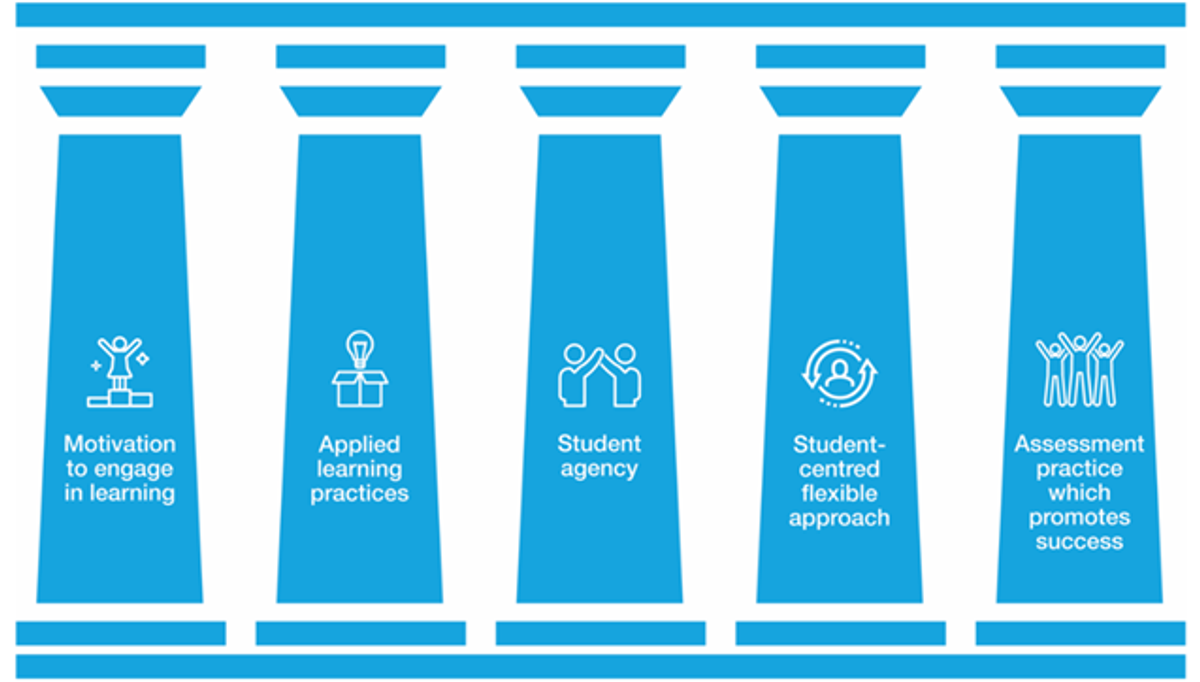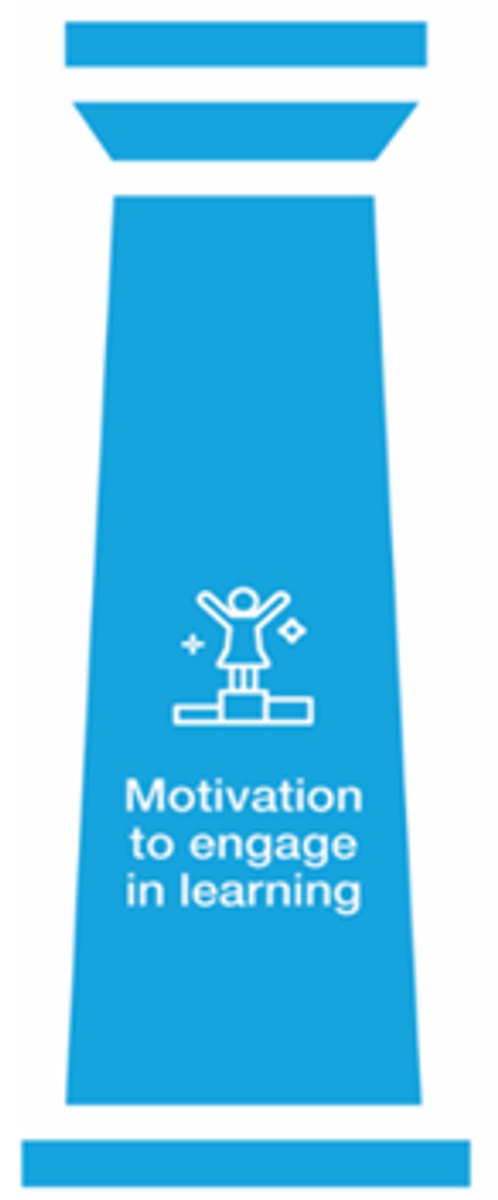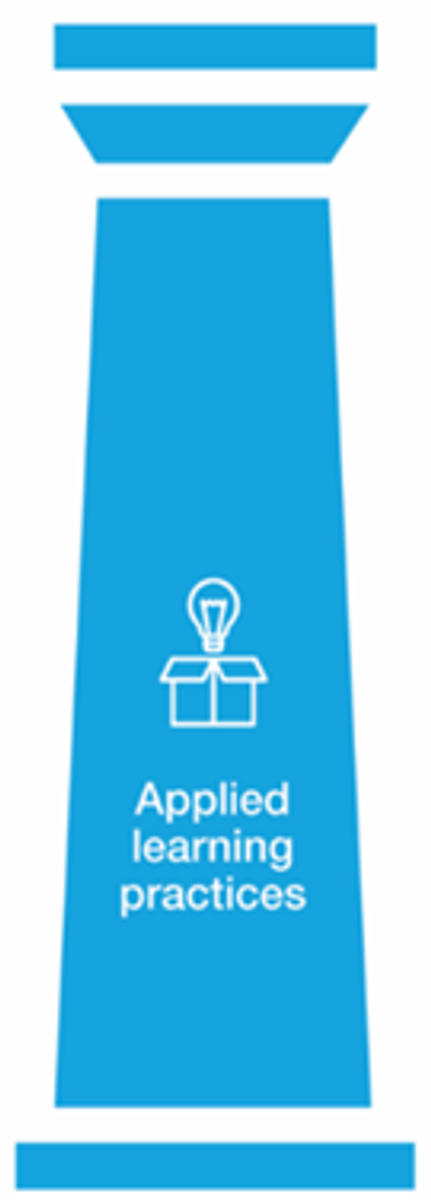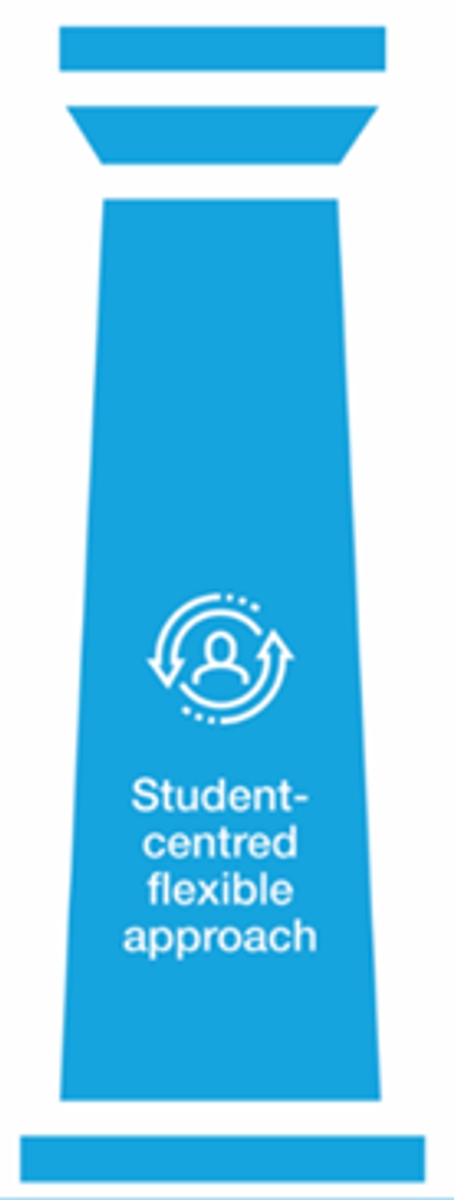Teaching and Learning
David Husk - Assistant Principal

Teaching and Learning
David Husk - Assistant Principal
VCE VM – APPLIED LEARNING
We pick up from our last newsletter where we discussed how the VCE VM works at Peter Lalor Secondary College. This time we will look closely at the applied learning model within the VCE VM.
Applied Learning
The Victorian Certificate of Education - Vocational Major is an applied learning option for students in Years 10, 11 and 12.
Like the VCE, the VCE VM is a recognized senior secondary qualification. Unlike the VCE, which is widely used by students as a pathway to university, the VCE VM focuses on an applied learning approach. Students who do the VCE VM are more likely to be interested in going on to training at TAFE, doing an apprenticeship, or getting a job after completing Year 12.
The following diagram highlights the Pillars of Applied Learning which are integral to the VCE VM certificate.


What is Applied Learning?
Applied learning involves students engaging in authentic and motivating learning experiences. It is a method of learning where theoretical information comes to life for students when in a real-world context that relates directly to their own future, is within their own control and is within an environment where they feel safe and respected. Students' knowledge grows and expands as they take action to learn, reflect on that action and plan how to do it better next time.
The basis for the Vocational Major within the VCE, categorises applied learning principles into 5 areas:
Motivation to engage in learning


Ensure what is learnt in the classroom is connected to scenarios and experiences outside the classroom and makes that connection as immediate and transparent as possible
Engage students in demonstrations, activities, investigations and problem-solving in the classroom, community, workplace and other educational settings
Undertake activities that challenge the student’s level of competence and support them to succeed and build self-efficacy.
2. Applied learning practices


Ensure students apply what they have learnt by utilising the learning cycle of doing, experiencing, reflecting and relating new knowledge and skills to the real world
To cater for individual student needs, use authentic materials and resources drawn from everyday life rather than mass-produced textbooks or materials
Utilise the experience and knowledge of community members including employers, cultural and community leaders and former students
Ensure learning reflects the integration that occurs in real-life tasks, incorporating skills and knowledge relevant to the whole task and the whole person such as collaboration, communication, problem solving and interpersonal skills
Present learning activities in different modalities: visual, auditory and kinaesthetic, to allow the greatest uptake of knowledge
3. Student agency


Engage in a dialogue with students about the curriculum and how they can make connections
Ensure students are moving to equal partners in determining the learning process as they develop greater independence and responsibility for their own learning
Encourage students to collaborate with peers and identify and utilise individual and group strengths, and reflect on each stage of their learning journey
Share knowledge and recognise the intellectual, cultural and practical knowledge students bring to the learning environment
Value students’ own approaches to the study including effective use of supporting technologies
Support students to learn through interaction and cooperation via discussion, asking questions, giving explanations and presentations, and working cooperatively in pairs or small groups.
4. Student – centred flexible approach


Understand the students’ knowledge and skills prior to commencing the study and use this as the starting point for their learning
Understand and encourage students’ personal, education and pathway goals
Consider the whole person and celebrate successes and connections to build resilience, confidence, and self-worth
Build on the positive strengths of each student, including learning strengths and character strengths
Teach concepts in contexts relevant to the students’ backgrounds, interests and experiences
Facilitate mutually beneficial relationships with a range of local communities while raising awareness about social and community issues and practices that influence and impact on students’ lives and futures.
5. Assessment practices which promote success.


Use the assessment method that best fits the content and context and allows for incremental indications of success
Afford students multiple opportunities for success and assessment.
What are the aims and purpose of the VCE VM certificate?
The aim and purpose of the VCE Vocational Major (VM) is to provide students with the best opportunity to achieve their personal goals and aspirations in a rapidly changing world by:
Equipping them with the skills, knowledge, values and capabilities to be active and informed citizens, lifelong learners and confident and creative individuals; and
Empowering them to make informed decisions about the next stages of their lives through real life workplace experiences.
It prepares students to move into apprenticeships, traineeships, further education and training, university (via non-ATAR pathways) or directly into the workforce.
What Must Students do to receive a VCE VM Certificate?
A student is awarded a certificate when they gain credits for 16 units that fulfil the minimum requirements for their learning program (see ‘How the VCE VM works p. 1 & 2. A credit is gained for successful completion of a unit of study.


At Peter Lalor Secondary College, we do all we can to help our students achieve successful outcomes as they progress through the VCE VM at Year 10 ,11 & Year 12.